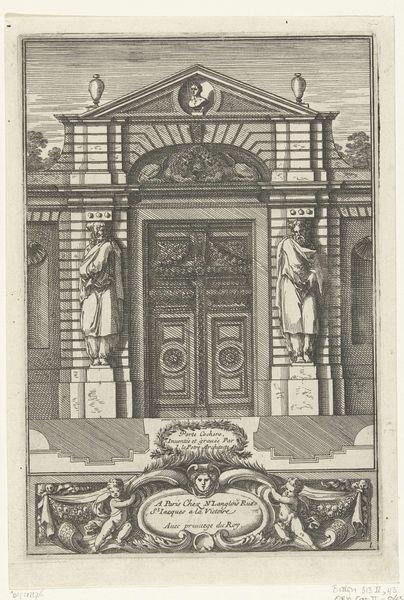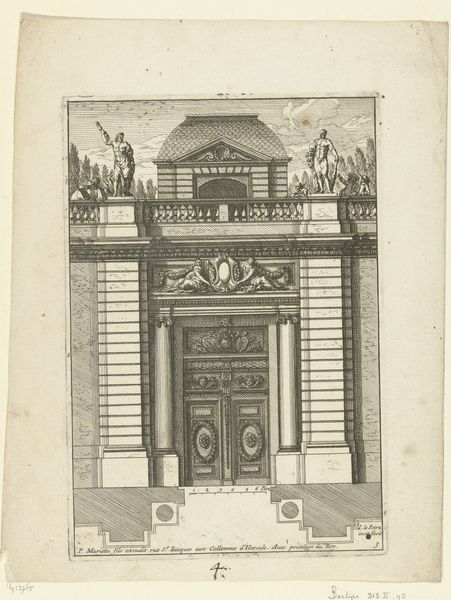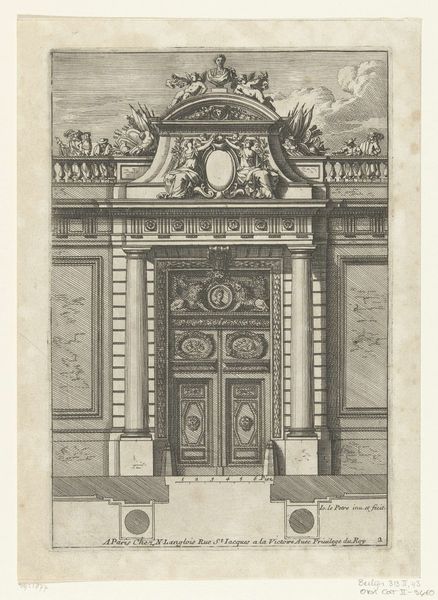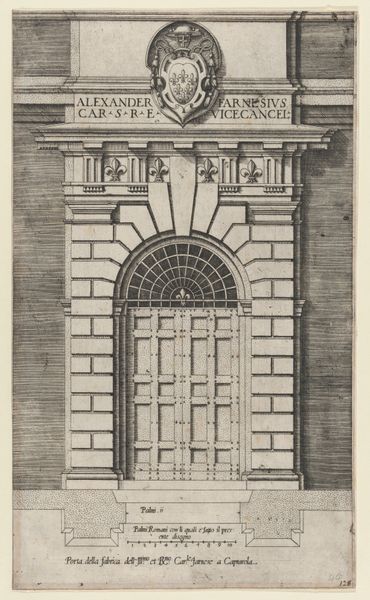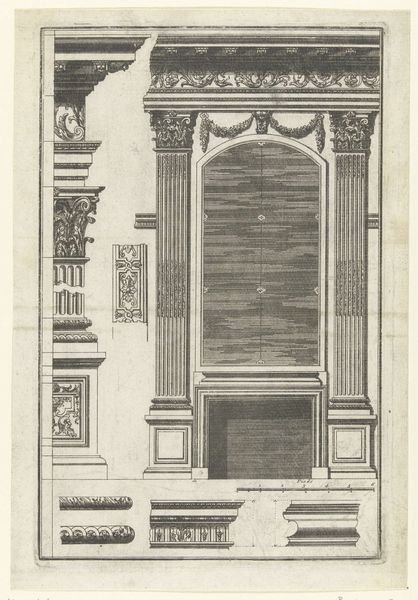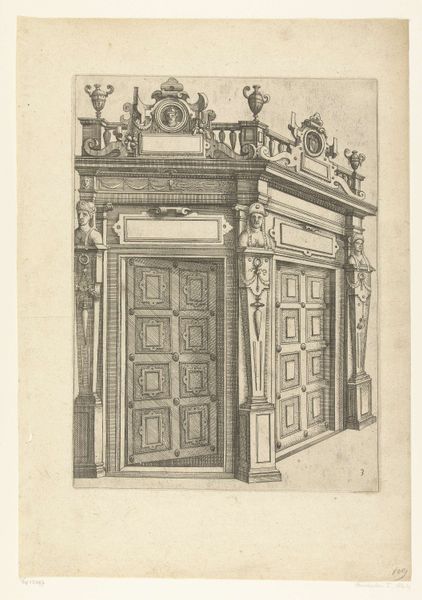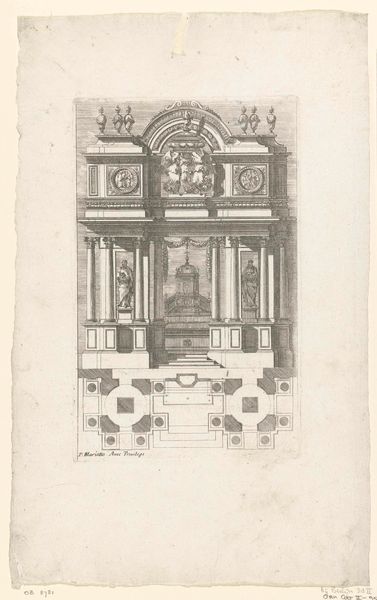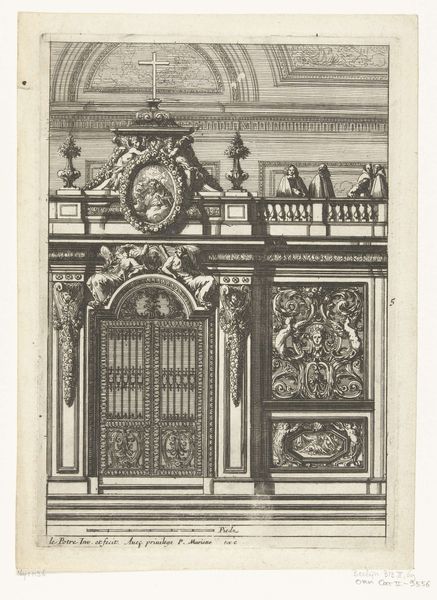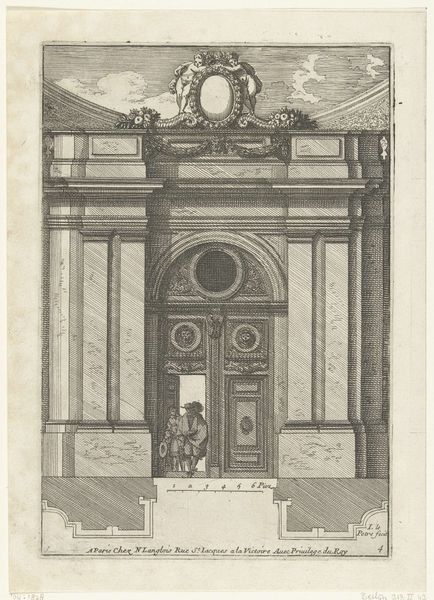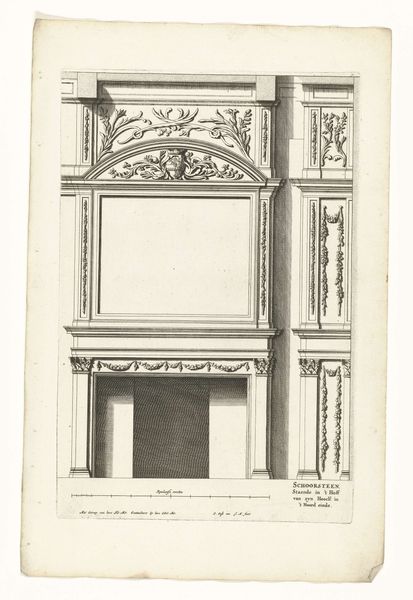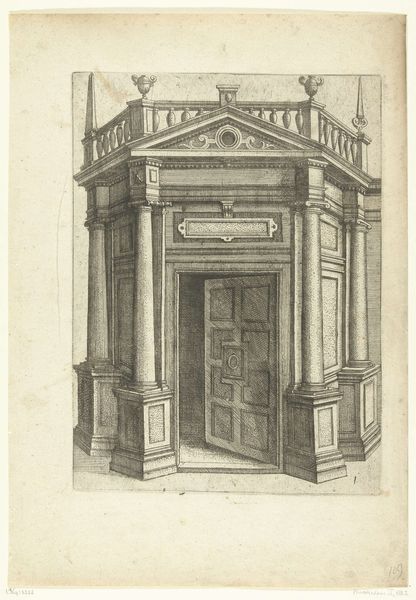
drawing, engraving, architecture
#
drawing
#
baroque
#
geometric
#
line
#
cityscape
#
history-painting
#
engraving
#
architecture
Dimensions: height 207 mm, width 143 mm
Copyright: Rijks Museum: Open Domain
Curator: Immediately, I’m struck by the absolute control of line, a rigid perspective dominating the composition. Editor: This engraving, known as “Portiek,” was created by Jean Lepautre around 1670-1680. It’s part of the Rijksmuseum's collection and exemplifies Baroque aesthetics. Lepautre worked in service to the French court. Curator: Knowing that, those austere, almost frozen figures flanking the doorway now seem imbued with a cold, classical significance; power perhaps, and permanence? Are those meant to represent idealized virtues safeguarding this entrance? Editor: Precisely. Consider how the doorway becomes a portal not just physically, but symbolically. Lepautre, working for a patron invested in projecting cultural capital, strategically uses iconographic devices—statues, wreaths, even the urns above—to visually communicate values such as prosperity and nobility. The viewer, whether contemporary or modern, receives layered cues through familiar forms. Curator: The material itself informs my response. It's an engraving. The production process--the incised lines into a metal plate, the application of ink, the pressure required for each impression—creates a reproducible image intended for dissemination. This democratizes architecture, in a sense. Instead of being confined to experiencing spaces as only accessed, consumers can contemplate or appropriate these architectural forms. Editor: That's a valid interpretation. Also, don’t neglect how Lepautre merges immediate architecture with landscape, drawing viewers into imagining more beyond this facade—an entire envisioned cityscape just hinted at above that wall. This connects the symbol of architecture with wider ambition. Curator: The social impact of widespread printed images in architectural trends is a key point. Architects, artisans, and the wealthy elite consumed these images. This affected design aesthetics through various socioeconomic layers. I can practically feel the artisan applying burin to copper, imagine a room of people scrutinizing details, or how these details translate from image into object. Editor: Ultimately, by paying attention to the engraving's symbolism and how such themes have persisted over time, and by scrutinizing materiality, it's easier to contextualize “Portiek's” contribution. Curator: I see the piece also through the lens of social dissemination and class: I believe examining how the medium itself interacts with, changes, and molds societal perception helps me unlock more of its story.
Comments
No comments
Be the first to comment and join the conversation on the ultimate creative platform.

